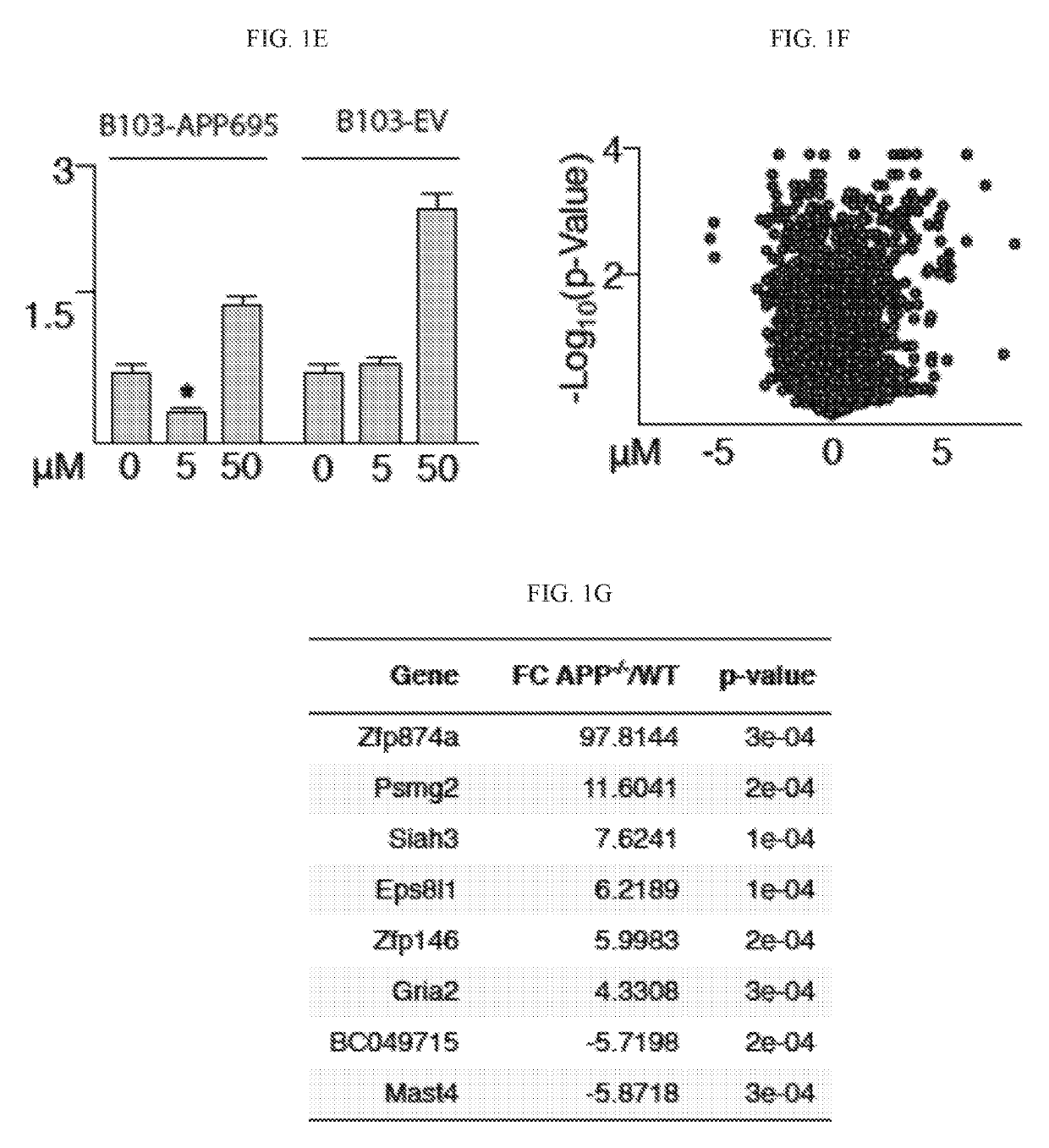Methods of diagnosing alzheimer's disease and risk of progression to alzheimer's disease
- Summary
- Abstract
- Description
- Claims
- Application Information
AI Technical Summary
Benefits of technology
Problems solved by technology
Method used
Image
Examples
example 1
[0198]The biological function of the amyloid precursor protein (APP) in the brain remains unresolved, a significant shortcoming that hinders our understanding of the complex etiology of late-onset Alzheimer's disease (AD) (1-5). Several laboratories, including ours, have proposed that APP could function instead as part of an adaptive response against bona fide pathogenic triggers of late-onset AD, such as oxidative stress, infection / inflammation and cholesterol dysregulation (4, 6-8). Nevertheless, while there is descriptive evidence consistent with such an adaptive response role, there is little mechanistic evidence to support it. The aim of this study was to determine whether APP regulates such an adaptive response to the cholesterol oxidized metabolite 27-hydroxycholesterol (27OHC), an early marker of cholesterol dysregulation in the AD brain that causes AD-like pathology both in vitro and in vivo (9, 10), and whether such a response could be mechanistically linked to late-onset ...
PUM
| Property | Measurement | Unit |
|---|---|---|
| Therapeutic | aaaaa | aaaaa |
| Stress optical coefficient | aaaaa | aaaaa |
| Level | aaaaa | aaaaa |
Abstract
Description
Claims
Application Information
 Login to View More
Login to View More - R&D
- Intellectual Property
- Life Sciences
- Materials
- Tech Scout
- Unparalleled Data Quality
- Higher Quality Content
- 60% Fewer Hallucinations
Browse by: Latest US Patents, China's latest patents, Technical Efficacy Thesaurus, Application Domain, Technology Topic, Popular Technical Reports.
© 2025 PatSnap. All rights reserved.Legal|Privacy policy|Modern Slavery Act Transparency Statement|Sitemap|About US| Contact US: help@patsnap.com



